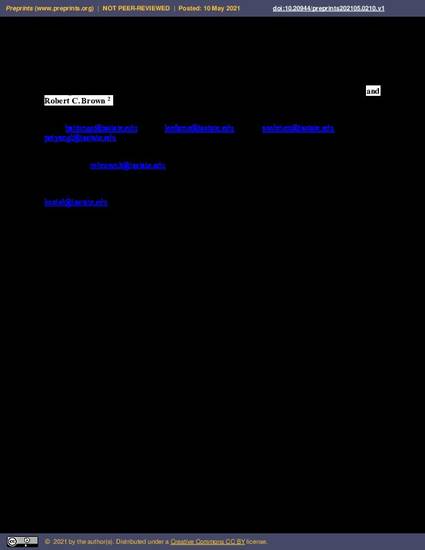
The risk of inhalation exposure to elevated concentrations of hydrogen sulfide (H2S) and ammonia (NH3) during the agitation of stored swine manure is high. Once or twice a year, farmers agitate manure before pump-out and application to fields. Agitation of the swine manure causes the short-term releases of highly toxic levels of H2S and NH3. In our previous pilot-scale studies, the biochar powder showed significant mitigation of H2S and NH3 emissions when it was surficially applied to manure immediately before agitation. However, fine biochar powder application poses hazards by itself and may not be practical to apply on a farm scale, especially when livestock and workers are present. We hypothesized that applying pelletized biochar to manure surfaces is just as effective as applying powder to protect farmers and animals from excessive exposure to H2S and NH3. This work reports on the lab-scale proof-of-the-concept trials with biochar pellets on the lab scale. The objective was to compare the biochar pellets and biochar powder on their effectiveness of mitigation on H2S and NH3 gases during 3-h-long swine manure agitation. Three scenarios were compared in (n = 3) trials: (i) control, (ii) 12.5 mm thick surficial application to manure surface of biochar powder, and (iii) an equivalent (by mass) dose of pelletized biochar applied to the manure surface. The biochar powder was bound with 35% (wt) water into ~5 × 10 mm (dia × length) pellets. The biochar powder was significantly (p < 0.05) more effective than the biochar pellets. Still, pellets reduced total H2S and NH3 emissions by ~72% and ~68%, respectively (p = 0.001), compared with ~99% by powder (p = 0.001). The maximum H2S and NH3 concentrations were reduced from 48.1 ± 4.8 ppm and 1810 ± 850 ppm to 20.8 ± 2.95 ppm and 775 ± 182 ppm by pellets, and to 22.1 ± 16.9 ppm and 40.3 ± 57 ppm by powder, respectively. These reductions are equivalent to reducing the maximum concentrations of H2S and NH3 during the 3-h manure agitation by 57% and 57% (pellets) and 54% and 98% (powder), respectively. Treated manure properties hinted at improved nitrogen retention, yet they were not significant due to high variability. We recommend scaling up and trials on the farm-scale level using biochar pellets to assess the feasibility of application to large manure surfaces and techno-economic evaluation.
Available at: http://works.bepress.com/jacek_koziel/434/

This article is published as Chen, Baitong, Jacek A. Koziel, Myeongseong Lee, Samuel C. O'Brien, Peiyang Li, and Robert C. Brown. "Mitigation of Acute Hydrogen Sulfide and Ammonia Emissions from Swine Manure during Three-Hour Agitation Using Pelletized Biochar." Atmosphere 12, no. 7 (2021): 825. DOI: 10.3390/atmos12070825. Posted with permission.